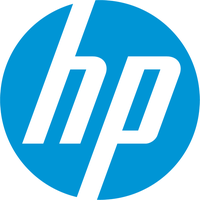The Shifting Sands of the PC Market: Growth and Challenges in 2024
November 27, 2024, 4:02 am

Location: United States, California, Fremont
Employees: 10001+
Founded date: 1984
Total raised: $360.05M
The PC market is a tale of two cities. On one side, India’s market is booming, while on the other, giants like Dell are struggling. The contrast is stark. In the third quarter of 2024, India’s PC market reached new heights, shipping 4.49 million units. This figure marks a slight increase of 0.1% year-over-year, according to the International Data Corporation (IDC). The landscape is changing, and it’s a story worth telling.
India’s growth is fueled by online festival sales. These sales ignited demand for premium notebooks, especially those priced over $1,000. The festive season transformed the market, with vendors slashing prices and offering enticing deals. Discounts, cashbacks, and bundled accessories became the norm. This strategy worked wonders, leading to the second biggest consumer quarter in history.
However, not all segments thrived. The desktop category saw a decline of 8.1% year-over-year. Meanwhile, notebooks and workstations managed to grow, albeit modestly, at 2.8% and 2.4%, respectively. The consumer segment also faced challenges, declining by 2.9% year-over-year. Vendors had to tread carefully, avoiding the pitfalls of overstocking that plagued previous years.
In contrast, the commercial segment experienced a healthy growth of 4.4%, while the enterprise segment surged by 9.6%. This divergence illustrates a market in transition. The consumer is cautious, while businesses are investing in technology. HP Inc. emerged as the market leader, capturing 29% of the share. Its success was driven by strong performance in both commercial and consumer segments. HP shipped 1.05 million notebooks, marking its third biggest quarter ever.
Lenovo followed as a distant second with a 17.3% market share. Dell Technologies, Acer Group, and Asus rounded out the top five. The competition is fierce, and each player is vying for a larger slice of the pie.
On the flip side, Dell is facing headwinds. The company forecasted a downbeat fourth-quarter revenue, largely due to weakness in its PC segment. The forecast fell short of Wall Street expectations, sending shares tumbling over 10%. Despite a booming demand for AI-optimized servers, Dell’s traditional PC business is struggling. The company is caught in a storm of stiff competition and weak consumer spending.
Enterprise customers are tightening their belts. They are cautious about IT spending, leading to a dip in demand for PCs. Dell’s client solutions group, which includes its PC business, reported revenue of $12.13 billion, falling short of expectations. The company’s overall revenue for the third quarter was $24.37 billion, also missing estimates.
The market is in a state of flux. Analysts note that the entire PC sector is transitioning. There’s a shift towards on-device AI functionality, but the path is unclear. This transition is expected to solidify by 2025. For now, companies like Dell are navigating uncertain waters.
Rival HP is also feeling the pressure. The company provided a weak first-quarter profit forecast, reflecting the broader challenges in the consumer electronics market. Best Buy, a major electronics retailer, trimmed its annual forecasts, citing weak demand. The signs are clear: the market is cooling.
Investors are closely monitoring Dell’s costs. The company has flagged higher expenses related to building AI-heavy servers. Competitive pricing is squeezing margins. Despite these challenges, interest in Dell’s AI portfolio is at an all-time high. The company reported record AI server orders of $3.6 billion in the third quarter, with a pipeline that grew over 50%.
The dichotomy between India’s booming market and Dell’s struggles paints a vivid picture of the current landscape. India is a land of opportunity, driven by festive sales and a growing consumer base. Meanwhile, established players like Dell are grappling with a shifting market.
The future is uncertain. Companies must adapt to changing consumer behaviors and technological advancements. The rise of AI is reshaping the industry, but it also brings challenges. The transition period is fraught with risks, and only the nimble will survive.
In conclusion, the PC market is a complex tapestry. India’s growth offers a glimmer of hope, while Dell’s struggles serve as a cautionary tale. The landscape is evolving, and the players must navigate these changes with agility. The next chapter in this story is yet to be written, but one thing is clear: the winds of change are blowing.
India’s growth is fueled by online festival sales. These sales ignited demand for premium notebooks, especially those priced over $1,000. The festive season transformed the market, with vendors slashing prices and offering enticing deals. Discounts, cashbacks, and bundled accessories became the norm. This strategy worked wonders, leading to the second biggest consumer quarter in history.
However, not all segments thrived. The desktop category saw a decline of 8.1% year-over-year. Meanwhile, notebooks and workstations managed to grow, albeit modestly, at 2.8% and 2.4%, respectively. The consumer segment also faced challenges, declining by 2.9% year-over-year. Vendors had to tread carefully, avoiding the pitfalls of overstocking that plagued previous years.
In contrast, the commercial segment experienced a healthy growth of 4.4%, while the enterprise segment surged by 9.6%. This divergence illustrates a market in transition. The consumer is cautious, while businesses are investing in technology. HP Inc. emerged as the market leader, capturing 29% of the share. Its success was driven by strong performance in both commercial and consumer segments. HP shipped 1.05 million notebooks, marking its third biggest quarter ever.
Lenovo followed as a distant second with a 17.3% market share. Dell Technologies, Acer Group, and Asus rounded out the top five. The competition is fierce, and each player is vying for a larger slice of the pie.
On the flip side, Dell is facing headwinds. The company forecasted a downbeat fourth-quarter revenue, largely due to weakness in its PC segment. The forecast fell short of Wall Street expectations, sending shares tumbling over 10%. Despite a booming demand for AI-optimized servers, Dell’s traditional PC business is struggling. The company is caught in a storm of stiff competition and weak consumer spending.
Enterprise customers are tightening their belts. They are cautious about IT spending, leading to a dip in demand for PCs. Dell’s client solutions group, which includes its PC business, reported revenue of $12.13 billion, falling short of expectations. The company’s overall revenue for the third quarter was $24.37 billion, also missing estimates.
The market is in a state of flux. Analysts note that the entire PC sector is transitioning. There’s a shift towards on-device AI functionality, but the path is unclear. This transition is expected to solidify by 2025. For now, companies like Dell are navigating uncertain waters.
Rival HP is also feeling the pressure. The company provided a weak first-quarter profit forecast, reflecting the broader challenges in the consumer electronics market. Best Buy, a major electronics retailer, trimmed its annual forecasts, citing weak demand. The signs are clear: the market is cooling.
Investors are closely monitoring Dell’s costs. The company has flagged higher expenses related to building AI-heavy servers. Competitive pricing is squeezing margins. Despite these challenges, interest in Dell’s AI portfolio is at an all-time high. The company reported record AI server orders of $3.6 billion in the third quarter, with a pipeline that grew over 50%.
The dichotomy between India’s booming market and Dell’s struggles paints a vivid picture of the current landscape. India is a land of opportunity, driven by festive sales and a growing consumer base. Meanwhile, established players like Dell are grappling with a shifting market.
The future is uncertain. Companies must adapt to changing consumer behaviors and technological advancements. The rise of AI is reshaping the industry, but it also brings challenges. The transition period is fraught with risks, and only the nimble will survive.
In conclusion, the PC market is a complex tapestry. India’s growth offers a glimmer of hope, while Dell’s struggles serve as a cautionary tale. The landscape is evolving, and the players must navigate these changes with agility. The next chapter in this story is yet to be written, but one thing is clear: the winds of change are blowing.
